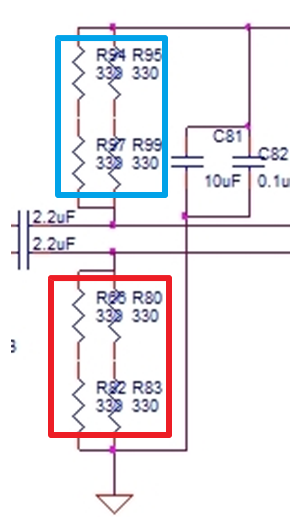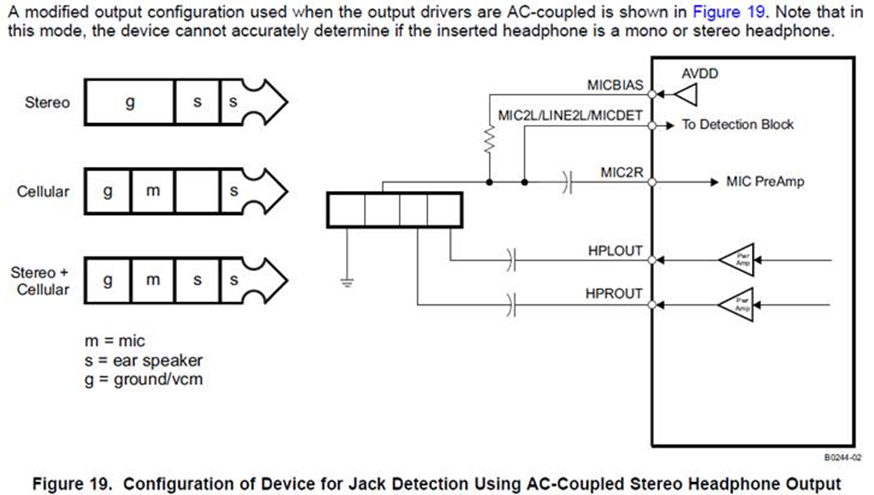Dear team,
1. Could you please help to check if the customer's differential microphone schematic is correct?
2. If the four resistors marked in the red box below are changed to 0R and connected to the ground, and the pull-up resistors marked in the blue box below use the 680R. Can this design be turned into a hardware design for a single-ended microphone? Is the connection between the codec pin and the differential microphone compatible?
3. What I also want to know is how does the 3104 do a single-ended microphone (or differential microphone) insertion detection function? How should the hardware be designed? Is the 3104's microphone detection function only available when using the mic2 channel? Can I use the mic1 channel to realize this function? How do you design a microphone detection circuit if the microphone input uses the mic1R/L channel?
Thanks & Best Regards,
Sherry





